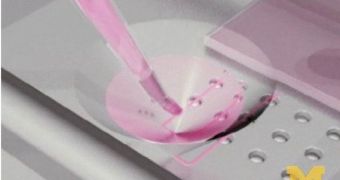In a groundbreaking, new study, it has been revealed that rocking mice embryos while they grow boosts in-vitro fertilization (IVF) success rates by more than 20 percent. This has led the team behind the study to conclude that the same type of treatment new parents apply to small children is beneficial to embryos as well. The finding could have significant repercussions for artificial reproduction techniques, which could see an increase in success rates if the embryos are rocked gently while they grow.
“One of our goals for years now has been to modify how we grow embryos in the lab to be more like how they grow in the human body, because we know that the human body grows them most efficiently,” University of Michigan in Ann Arbor (UM) Obstetrics and Gynecology Associate Professor Gary Smith explains, quoted by LiveScience.
In current IVF practices, the expert adds, the male and female cells are combined in a petri dish, where they grow in a static environment for a few days, before being implanted in the female uterus. During these essential first days, rocking the culture dish gently could result in an environment that is more similar to the natural one, the team adds.
Smith also reveals that, at this point, only 35 percent of IVF procedures are a success. Only about one in six couples with infertility problems can benefit from this course of treatment, and experts around the world have been looking for ways to remedy that, and increase the success rates, for many years. “If we could increase that, even just to 45 percent, that's significant. We're making healthier embryos, which not only can improve pregnancy rates, but also could allow us to transfer fewer embryos per cycle and reduce the incidence of twins and triplets,” the UM expert goes on to say.
In the study on mice, the differences between the new approach and the old one immediately became obvious. A static petri dish culture on average yielded embryos with around 67 cells, whereas the cultures that were moved featured embryos with roughly 109 cells. This figure is a lot closer to the one that is routinely registered inside living mice, where embryos contain as much as 144 cells at the same time frame.
“By making the cells feel more at home, we get better cells, which is key to having better infertility treatment,” UM Associate Professor of Biomedical Engineering Shu Takayama concludes. The scientist has also been a researcher on the new study, details of which appear in the latest issue of the scientific journal Human Reproduction.

 14 DAY TRIAL //
14 DAY TRIAL //